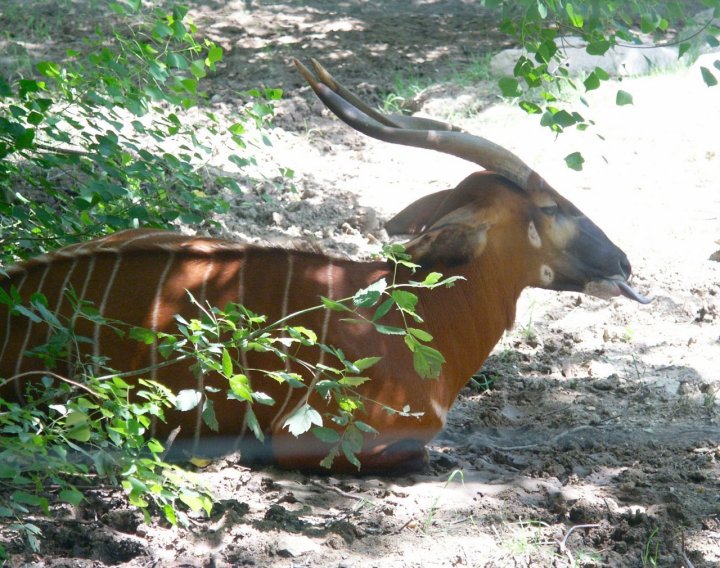BONGO ANTELOPE


| COMMON NAME: Bongo Antelope |
| SCIENTIFIC NAME: Tragelaphus euryceros |
| LOCATION: Kenya and Western Africa |
| HABITAT: Lowland and mountain forests |
| SIZE: 44-54 inches, 470-900 pounds |
| GESTATION PERIOD: 9 months, giving birth to one calf |
| LIFESPAN: Up to 19 years |
| DIET: Leaves, flowers, garden produce, twigs |
| LOCATION IN THE ZOO: Near the Cheetah Exhibit |
| Source Materials and Related
Links:
Walker's Mammals of the World, Fifth Edition, Volume II. Pages 1414-1415. Grzimek's Animal Life Encyclopedia, Mammals IV, Volume 13. Page 302, 1972. Science News, Volume 125, G. Morse. June 9, 1994. Page 358. The Mombongo Conservation and Research Project, http://www.colszoo.com/Conservation/Africanforest/nodoki/mumbongo/mbongo.html http://www.seaworld.org/animal_bytes/bongoab.htm http://www.ultimateungulate.com/bongo.html http://planet-pets.com/plntanlp.htm
|
| Page Author: Karla Perez
Email Address: Perez9292@aol.com |
WhoZoo Home Animal Index |